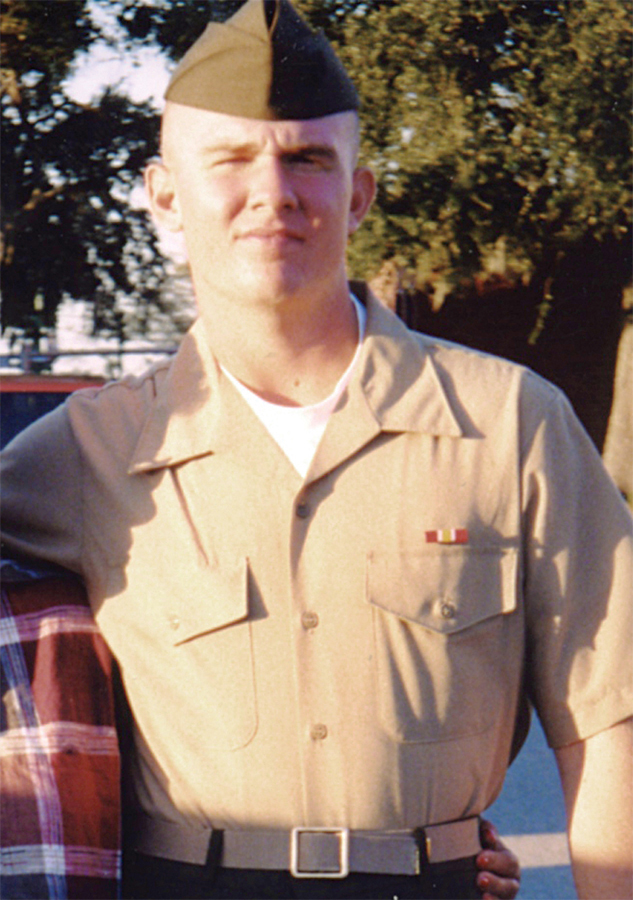2.1 An Introduction to the Brain
biology and behavior
IN THE LINE OF FIRE
An Introduction to the Brain
IN THE LINE OF FIRE
It was November 9th, 2004, and U.S. Marine Brandon Burns was surrounded on all sides by gunfire. The enemy was everywhere, in the buildings, streets, and alleyways of Fallujah.
“I was in the deepest part of the city [and] there was chaos,” remembers Brandon. At age 19, Brandon was on the front lines in the Iraq War, fighting in the battle of Fallujah. “I was on top of the Humvee automatic grenade launcher shooting round after round,” Brandon remembers. Suddenly, there was darkness. A bullet from an enemy sniper impaled Brandon’s helmet, pierced his skull, and ricocheted through the back left side of his brain. Bleeding and unconscious, Brandon was rushed from Fallujah to Baghdad. Medics had to resuscitate him on five separate occasions during that ambulance ride. Brandon explains, “Five times I died.”
After arriving in Baghdad, Brandon was transferred to a hospital in Germany. Doctors concluded that some parts of his brain were no longer viable. “They removed part of my skull and dug out the injured part of my brain,” and now, Brandon says, “one third of my brain is gone.”
Note: Quotations attributed to Brandon Burns and Christina Santhouse are personal communications.

LEARNING OBJECTIVES
after reading and studying this chapter, you should be able to:
- LO 1 Define neuroscience and explain its contributions to our understanding of behavior.
- LO 2 Label the parts of a neuron and describe an action potential.
- LO 3 Illustrate how neurons communicate with each other.
- LO 4 Summarize various neurotransmitters and the roles they play in human behavior.
- LO 5 Recognize the connections between the central and peripheral nervous systems.
- LO 6 Describe the organization and function of the peripheral nervous system.
- LO 7 Evaluate the role of the endocrine system and how it influences behavior.
- LO 8 Describe the functions of the two brain hemispheres and how they communicate.
- LO 9 Explain lateralization and how split-brain operations affect it.
- LO 10 Identify areas in the brain responsible for language production and comprehension.
- LO 11 Define neuroplasticity and recognize when it is evident in brains.
- LO 12 Compare and contrast tools scientists use to study the brain.
- LO 13 Identify the lobes of the cortex and explain their functions.
- LO 14 Recognize the association areas and identify their functions.
- LO 15 Distinguish the structures and functions of the limbic system.
- LO 16 Distinguish the structures and functions of the brainstem and cerebellum.